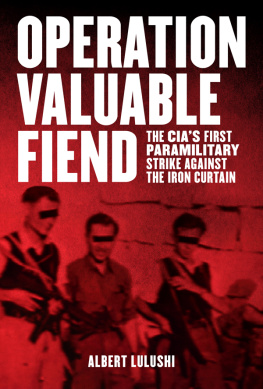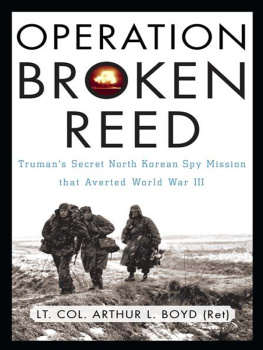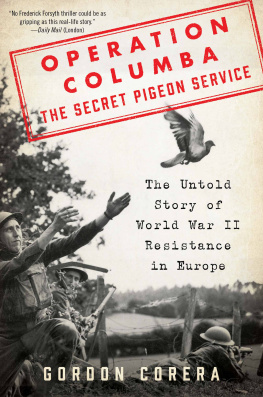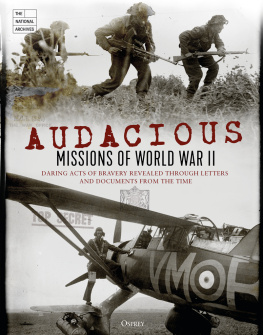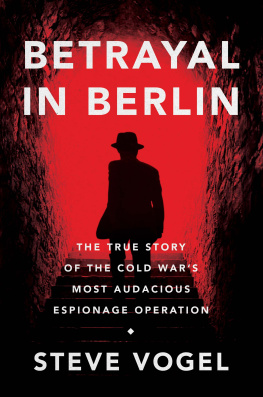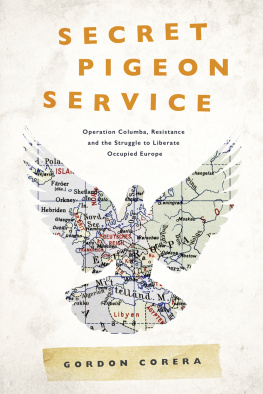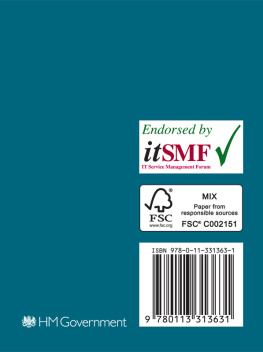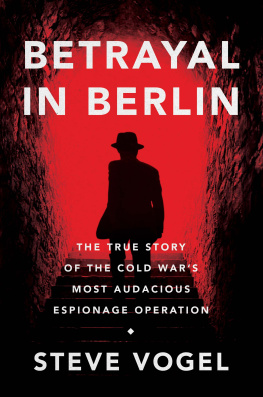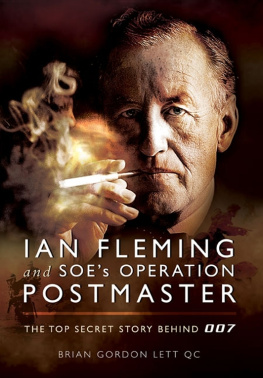Copyright 2014 by Albert Lulushi
All Rights Reserved. No part of this book may be reproduced in any manner without the express written consent of the publisher, except in the case of brief excerpts in critical reviews or articles. All inquiries should be addressed to Arcade Publishing, 307 West 36th Street, 11th Floor, New York, NY 10018.
First Edition
Arcade Publishing books may be purchased in bulk at special discounts for sales promotion, corporate gifts, fund-raising, or educational purposes. Special editions can also be created to specifications. For details, contact the Special Sales Department, Arcade Publishing, 307 West 36th Street, 11th Floor, New York, NY 10018 or .
Arcade Publishing is a registered trademark of Skyhorse Publishing, Inc., a Delaware corporation.
Visit our website at www.arcadepub.com.
Visit the authors website at www.valuablefiend.com.
10 9 8 7 6 5 4 3 2 1
Library of Congress Cataloging-in-Publication Data is available on file.
Library of Congress Cataloging-in-Publication Control Number: 2014004159
ISBN: 978-62872-322-9
Ebook ISBN: 978-1-62872-394-6
Cover design by Owen Corrigan
Printed in the United States of America
To Enit, Alex, Anna, and Tereza
I am very strongly of the opinion that the lessons which are daily being borne in upon us by the development of this Project are to a considerable extent being neglected in favor of rapidly growing vested interests, and that as a result we stand a very good chance of being faced with a failure the nature and causes of which will be confused in an exchange of recriminations.
From CIA memorandum Current Status of Project BGFIEND, August 16, 1949
One general feature, which seems to be common to many instances of controlled operations, is the unconscious effort on the part of all concerned to rationalize the appearance of security checks when used to indicate control. Such a reaction is natural when considered in terms of the case officers identification with the Agent. Obviously, however... such a rationalization negates the entire purpose of such checks.
Chief, Communications Security Division, CIA, January 13, 1954
Its part of a writers profession, as its part of a spys profession, to prey on the community to which hes attached, to take away informationoften in secretand to translate that into intelligence for his masters, whether its his readership or his spy masters. And I think that both professions are perhaps rather lonely.
John le Carr, September 25, 1977
Contents
List of Maps and Documents
Acknowledgments
I am grateful to all those who made it possible for me to write this book. They include: employees at the National Archives in College Park, Maryland, who helped me track hundreds of hardcopy and electronic documents from the CIA and Department of State archives; Alex Rankin and Laura Russo at Boston Universitys Howard Gotlieb Archival Research Center for facilitating access and research of the McCargar and Burke collections; Breanne LaCamera at Columbia University Center for Oral History for tracking down interview transcripts of Col. Gratian M. Yatsevitch; and my friends in Albania Anton Ashta and Xhevdet Shehu for locating material from Albanian archives and sources.
I received tremendous help and encouragement from those who read early drafts of the book and provided invaluable suggestions that improved the end product. They include Astrit Lulushi, Elez Biberaj, William E. Ryerson, Frank G. Wisner II, Ellis Wisner, Wendy Hazard, Gratian M. Yatsevitch III, Monica Morrill, Rose Dosti, Nicholas Pano, Marguerite Ulmer-Power, Jon Lieb, and David Robarge.
A big thank you goes to my editor at Skyhorse Publishing, Cal Barksdale, who saw the value of the book from the beginning and provided great guidance throughout the editing and publishing process.
Last but not least, infinite thanks to Enit, Alex, Anna, Esmeralda and Slim Shady who put up with my writing schedule and created a warm and cozy environment so I could finish the project, even when the feat seemed so far from possible.
Introduction
I n 1949 a newly minted branch of the CIA, flush with money and burning with determination to roll back the Iron Curtain, embarked on the first paramilitary operation in the history of the agency. Theirs was an elaborate plan, coordinated with the British Secret Intelligence Service, aimed at detaching the weakest of the Soviet satellites in Europe, Albania, from Moscows orbit. The operation suffered a dismal failure and the CIA substantially shut it down by 1954.
I had heard the story growing up in Albania in the 1970s and 1980s, where the Communist propaganda machine trumpeted it as a triumph of the Albanian secret police, the Sigurimi, over the reactionary forces of internal and external enemies. All of these enemies, the story went, were controlled by the CIA and its numerous subordinate foreign intelligence agencies, including the British, Greek, Yugoslav, and Italian services. Until the fall of the Communist regime in 1992, a museum of the Sigurimi in Tirana prominently displayed clothes, parachutes, radio transmitters, and weapons of the so-called diversionists together with gruesome pictures of those who were killed next to pictures of those who were captured and put on show trials between 1949 and 1954.
When I came to the United States in the early 1990s, I read the version of the story recounted by Nicholas Bethell in his book Betrayed , in which he places the blame for the failure of the operation on Kim Philby, the most famous Soviet mole inside the British Secret Intelligence Services. Philby had served as the joint commander of the operation in its early days. It sounded like a reasonable explanation, and I didnt think much about it until the fall of 2012, when I reread Bethells book over the Thanksgiving weekend. Going over the sequence of events, I realized that Philby had been involved with the effort only until the summer of 1951 when he fell under suspicion, whereas the operation sustained most of its casualties afterward. It was logical to think that other factors must have been in play to cause the compromise.
I began researching what others had written about the story, only to find that most authors had retold Bethells version of the events or had treated the subject in a cursory fashion, based on a limited set of primary sources that had become available over the years. To satisfy my intellectual curiosity, I made a list of questions I wanted answered about this story: Why did the CIA choose to conduct an operation of this kind? Why did they pick Albania? Who were the key players in the operation, from all sides? Where did they come from and how did their background influence their choices and actions during the operation? What happened to them afterward? What were the lessons the agency learned from the Albanian operation? What were the warning signs that were missed, and did they have an effect on other operations that followed? Ultimately, how are we to judge the outcome and legacy of the operations conducted at the time from todays perspective?
I began a journey of research and discovery in order to answer these questions. It took me to the National Archives, where I found a surprisingly large number of CIA documentsdeclassified as of 2007about the operation BGFIEND, also known as Project Fiend, which thoroughly detail how the agency planned and conducted their activities. Given the usual reluctance of the CIA to reveal sources and methods of operations, I found these documents fascinating in that they provide a unique insight into the actions of the paramilitary arm of the agencythe precursor of todays National Clandestine Servicein the early and formative years of its existence.

